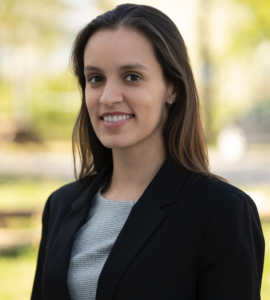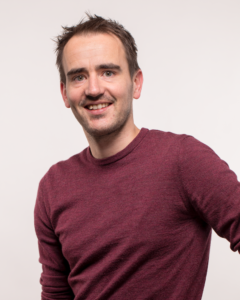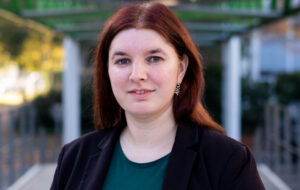The Netherlands Organisation for Scientific Research is honouring the plans of no fewer than three Nikhef researchers. With a VIDI grant of 800,000 euros each, they will develop their own innovative lines of research in the coming years.
This was announced by NWO on Wednesday. In total, the research financier awarded 78 new VIDI grants, 38 to women and 40 to men. About one in five applications receives funding.
The researchers will use the grant money to set up their own research groups over the next five years. At Nikhef, it concerns the UvA’s Flavia de Almeida Dias, who is associated with the ATLAS experiment at CERN. Theoretical physicist Jordy de Vries (UvA) is researching neutrino processes. And Jessica Steinlechner works within gravitational wave research at Maastricht University.
Flavia Dias (1987) will use the ATLAS detector at CERN to experimentally study processes involving two W or Z particles, important force carriers in the particle world. Her research focuses on subtle deviations in such di-boson processes, which may be a harbinger of real deviations from the standard model beyond the energy that the LHC accelerator in Geneva can deliver. She will appoint a PhD student and a post-doc for this purpose.
Theorist De Vries (1986) is doing research on so-called sterile neutrinos. Neutrinos are ghostly elementary particles. Three types are known, with slightly different masses. If these masses are created via the Higgs particle, as with other particles, there should theoretically be three additional types of neutrinos. These are special because they do not interact with matter at all. De Vries will work with a postdoc and a student to study how such sterile neutrinos can be linked to dark matter in the universe and how they could still be found, for example with experiments at CERN.
Jessica Steinlechner (1981) is involved in the development of improved detectors for gravitational wave measurements, such as the future Einstein Telescope. Such vibrations of space and time are measured with interferometers such as LIGO and Virgo, in which laser light bounces between mirrors to see extremely small distance variations. She is looking for new chrystalline mirror coatings in which the natural heat movement of molecules is minimal to get as little noise as possible in the actual measurements. The new mirrors will be tested at the ET Pathfinder facility in Maastricht, which is now under construction.
The three grants are wonderful news for Nikhef, says director Stan Bentvelsen. “It shows once again how our institute offers space to up-and-coming scientific talent. And it does so across the board, from theory and experiment to technical research and from particle physics to gravitational waves.”


